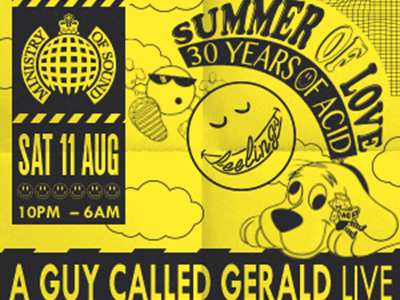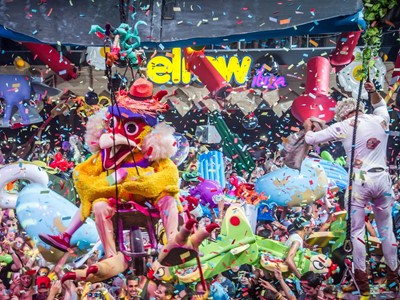As The BBC air Spike Lee's Michael Jackson documentary, lets examine his influence on dance music
Think back to the pop music scene in the 1970s. Doesn’t matter if you weren’t alive, just picture John Travolta before he got fat in a set of white flares with falsetto backing vocals. Looks fun right? The disco era was nothing if not fun and at the heart of the disco movement were The Jacksons; no longer the loveable young boys from the Ed Sullivan show, these were men writing hits so catchy they could drag you onto any dancefloor, from “Blame It On The Boogie” to “Dancing Machine” and the evergreen classic “Shake Your Body Down To The Ground”.
But these tracks, while still standard procedure at most wedding receptions and even the occasional wake, eventually fell out of fashion, making way for the synth-led pop of the 1980s before rave culture hit in the 1990s and modern dance music was birthed.
While any serious attempt at a disco revival may have been killed off with the "disco sux" chants of punk rock, it's lingering influence on dance music is unquestionable. And one album, perhaps above all others, has transcended disco's downfall. An album full of unabashed euphoric dancefloor classics that continues to influence artists from across the dance music spectrum. That album is Off The Wall.
This month, Spike Lee takes an in depth look at the creation of the record in his documentary Michael Jackson’s Journey From Motown To Off The Wall, featuring interviews with Jackson’s spiritual successors like The Weeknd and Questlove along with previously unseen live footage of the songs in concert.
And, for my money, those songs were the beginnings of modern dance music. Not the hacienda, not Ibiza but the opening rumble of “Don’t Stop Till You Get Enough”, growling over a bass groove before that iconic, emancipating 'whoop' announces the strings and horns, building a hook so big you could hang a set of decks on it.
One of the more fascinating segments of the film shows Michael at the legendary Studio 54, not revelling with the endless sea of debauched icons, but stood at the DJ booth, observing and taking note of what was making people go so crazy night after night. Much like he did in his days as a child star at Motown or on TV stages with Gene Kelly and Sammy Davis Jr, Jackson, Jackson was noting what made the greats great and vowing to find a way to top them.
And top them he did. “Workin Day And Night”’s complex rhythmic backing, largely built around percussive beat boxing, would later be retread by everyone from Daft Punk to Timbaland. The title track was sampled by Sebastien Leger, the album proving to be a useful basis for any DJ looking to set a dance floor alight.
Even the softer moments like “I Can’t Help It”, composed by Stevie Wonder, could be said to have influenced the Chill Out genre, its laidback R ‘n’ B wistfully floating along as the bangers fade into ballads to match the mood of the morning ravers.
“Don’t Stop…” would be sampled by Beyonce, “Rock With You” by Burial, Louis La Roche remade “It’s The Falling In Love” into a club banger in 2008 and even current chart toppers The 1975 have admitted the record’s influence on the likes of ear worm single “The Sound”.
Jackson would later experiment with blockbuster pop on Thriller before mixing in new jack swing on Dangerous and History, adding a slick robotic edge to his dance tracks that fit the 90s era well but established him as less of a trendsetter and more of a follower of the latest fads. So it is Off The Wall that will remain the collection that DJs worldwide will always come back to as a guaranteed win with any crowd.
The Spike Lee doc is accompanied by a remastered reissue of the album. I suggest you pick it up. Because, over 30 years on, it still sounds as fresh as ever and will, undoubtedly, make you get on the floor.
Michael Jackson’s Journey From Motown To Off The Wall will air on BBC this weekend.



